Sarajevo
In the beginning of the twentieth century, Europe was more or less a geopolitical powder keg waiting to burst. Several great powers such as Britain, France, Russia, Germany, Serbia, Ottoman Empire (Turkey), Italy and not least Austria-Hungary (also called the Habsburg monarchy) all had great power ambitions but not always compatible with each other. Pacts were signed if it could bring political and military benefits over others. Austria-Hungary was founded in 1867 and was ruled by Emperor Franz Joseph I who strongly disliked Serbia’s political ambitions in the Balkans. At this time, parts of Slovenia, Croatia and Bosnia (incl. Sarajevo) were part of Austria-Hungary. In Bosnia, there was a large population of Serbs who in turn disliked Franz Joseph’s anti-Serb politics. Therefore it is not surprising that Serbian nationalist groupings emerged that embraced violence as a means of liberating Bosnia from the Habsburg monarchy.
In June 1914, Emperor Franz Joseph had sent his son and heir to Bosnia to oversee military exercises. After the exercises (which can be seen as a demonstration of strength) and according to the protocol, it was thought that Franz Ferdinand and his pregnant wife Sophie would visit Sarajevo and attend an official reception in the City Hall. Franz Ferdinand’s upcoming visit to Sarajevo was official and had been planned since the spring of 1914. But this publicity also gave conspirators plenty of time to plan and put into effect any plans of attack when the couple’s timetable and route were known in advance.
In the morning of June 28, the princely couple arrived in Sarajevo. First, they visited a military facility and inspected troops and then proceeded in a six-car cortege towards the City Hall. But at the same time the couple arrived in Sarajevo, a group calling themselves the Black Hand had deployed six attackers along the route in central Sarajevo the priceley couple were to travel. As the cortege approached the Cumurija bridge, one of the attackers threw a bomb at the couple’s car. However, the bomb hit the folded-down top and bounced off, exploding under the car behind the couple’s car. Ferdinand did not let himself be intimidated by this, but continued as planned towards the City Hall. After the reception in the City Hall, Ferdinand insisted on visiting the hospital where people injured by the bomb were cared for.
This was something that created confusion and uncertainty for both drivers and people in charged of the couple’s security. Shortly after departure from the City Hall and at the height of the Latin bridge, the cortege wrongly turned right into a smaller street. When the mistake was discovered, the cortege stopped and the car with the princely’s couple started to turn around. But on this street there was a young Bosnian-Serbian nationalist named Gavrilo Princip. Princip did not belong to the Black Hand but belonged to a more loosely composed group that called themtselves Young Bosnians. Princip had traveled to Sarajevo to murder Ferdinand if the opportunity arose. Little did he know that by chance he would enter the history books.
When Princip saw the car with the princely couple, he ran out into the street and at close range fired two shots. The first shot ricocheted through the car’s door and hit Sophie in the stomach and the second shot hit Ferdinand straight in the throat. Gavrilo then tried to shoot himself but was overpowered and arrested. Ferdinand and Sophie were rushed back to the City Hall for treatment but were pronounced dead about half an hour after they were shot. After the attack, the bodies were first transported by boat to Trieste and later by train to Vienna for a state funeral on July 4. They were then taken to the castle of Artstetten for the final rest.
Princip and six other conspirators were arrested and brought to trial in Sarajevo in October 1914. Princip was sentenced to 20 years in prison while several other conspirators were sentenced to death. Princip was taken to the fortress in Terezin where he was put in solitary confinement and died of tuberculosis in April 1918 at the age of 23. In 1920, the remains of Princip and other conspirators were brought to Sarajevo and buried in a chapel in a Serbian orthodox cemetery.
The Assassination of Franz Ferdinand and his wife has gone down in history as the shots in Sarajevo and became the spark that triggered the First World War. On July 23, Austria-Hungary issued an ultimatum to Serbia to suppress all forms of Austrian-Hungarian hostility, dissolve Serbian nationalist groups, clear out hostile elements within the military and civilian institutions, and allow Austrian-Hungarian police to work in Serbia. Serbia agreed to everything except allowing foreign police within its borders. Russia tried to mediate but Austria-Hungary refused to compromise and declared Serbia war on July 28. The mobilizations and declarations of war then followed country by country and the First World War was a fact.
Current status: Preserved with monument (2025).
Location: 43°51'28.43"N 18°25'43.99"E
Get there: Walking.
Follow up in books: Cornwall, Mark: Sarajevo 1914: Sparking the First World War (2020).
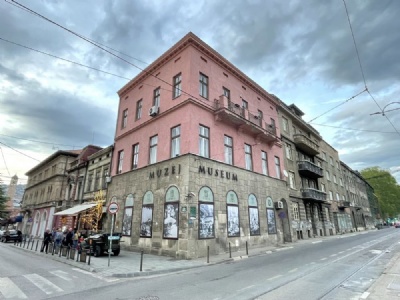
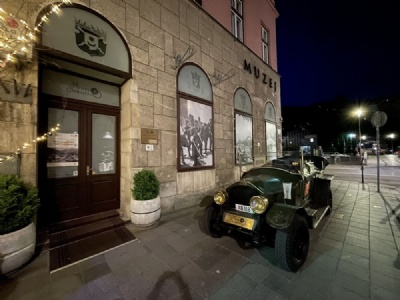
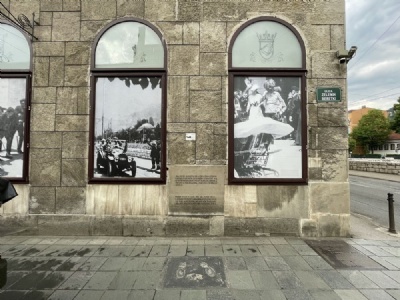

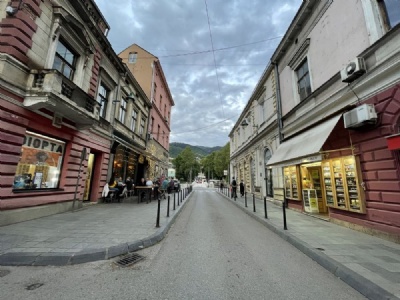
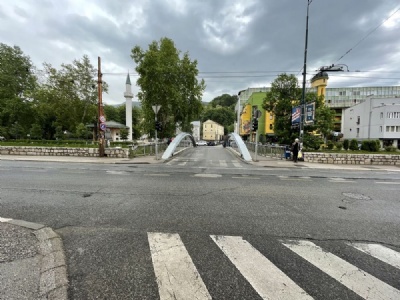


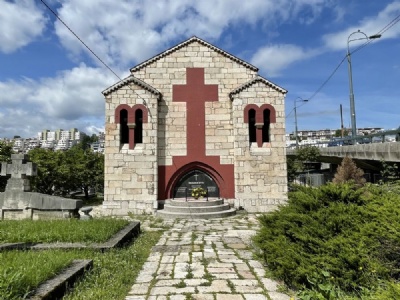
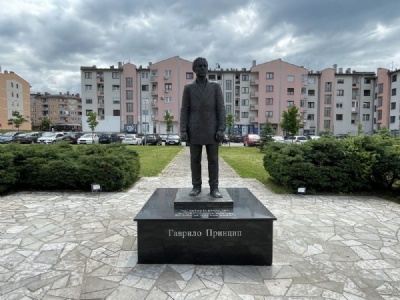

The Central location of the assassination in the old town makes it a popular destination for tourists and passer-by. On the site there is also a museum about Sarajevo’s history where the assassination is one part of the history. There is also a similar car that the princely couple travelled in when they were murdered. The real car and the gun Princip used are on display in Vienna’s military history museum. In 1920, Princip’s remains (along with twelve other Serbian nationalists who in one way or another were involved in the resistance against Austria-Hungary) were returned to Sarajevo and placed in a chapel (Vidovdan Heroes Chapel) at Holy Archangel’s Georgije and Gavrilo Orthodox cemetery in Sarajevo.
After the First World War, Princip was seen as a hero in the kingdom of Yugoslavia and monuments were erected, one for example, at the scene of the assassination. When Germany occupied Yugoslavia, Princip was seen as a terrorist and monuments and memorials were removed. In communist Yugoslavia that arose after the Second World War, Princip was once again seen as a hero and new monuments sprung up and demolished monuments rebuilt. Depending on who were in power, the monuments of Princip have come and gone. In 2025 there were statues and murals of Princip in several places in Sarajevo.
Sarajevo, however, is so much more than just the shots. In 1984, the city hosted the 14th Olympic winter games and several facilities (both sports and hotels) remains, although several of them were badly damaged during the civil war and are now abandoned or dilapidated. In particular, the bobsleigh and luge track on Mount Trebevic above Sarajevo, which is now a popular destination that can be reached by a cable car from central Sarajevo. Just outside Sarajevo, at Mount Igman, the olympic ski jump facility remain, including the podium where the award ceremony was held.
Sarajevo suffered tremendous during the civil war that followed Yugoslavia’s disintegration in the early nineties. For 1425 days between 1992 and 1995, the city was besieged by Bosnian serb forces, making it the longest siege in modern times. In comparison the German siege of Leningrad during World War Two lasted for about 900 days. The city was continuously shelled from the heights above and snipers made it dangerous to go and stay outdoors. The memories and museums of the siege and the civil war are many. The photos and film sequences shown are definitely among the most terrified and brutal I have ever seen on any museum and exhibition I have visited.